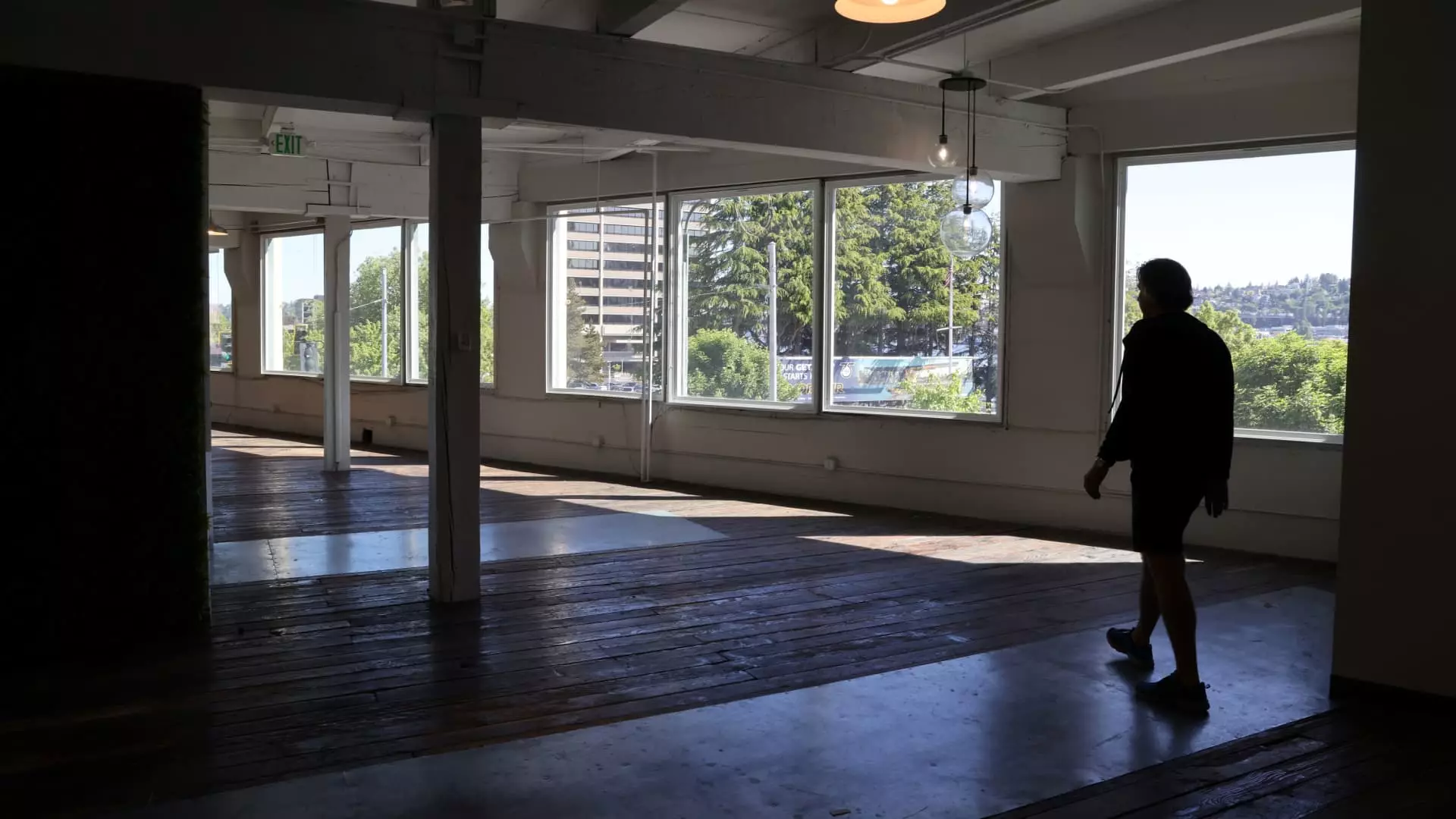The landscape of the U.S. office market has endured a tumultuous journey in recent years. Following a period marked by unprecedented distress, we stand at a crossroads—a poignant moment that could redefine the way we conceive of work environments. For the first time in a quarter of a century, the tides have turned: more office spaces are being demolished or repurposed than constructed. This seismic shift heralds a new era that challenges conventional wisdom about commercial real estate, bringing with it both promise and concern.
As we digest the latest findings from CBRE Group, we encounter a startling statistic: an estimated 23.3 million square feet of office space will be either demolished or converted by year’s end, starkly contrasting with the 12.7 million square feet slated for new construction. This marks a pivotal moment; the implications of this trend extend far beyond numbers—they hint at a broader reevaluation of how we work, live, and interact.
The Remote Work Paradigm
Central to this transformation is the tectonic shift toward remote work—a phenomenon that gained traction during the pandemic and has since ingrained itself in the fabric of corporate culture. The days of corporate giants luxuriously filling high-rises are waning, as employee preferences evolve. The bittersweet irony is that as office vacancies spiked to record levels, the very notion of a traditional office is being challenged. With vacancy rates stubbornly hovering around 19%, the question emerges: can office environments adapt to meet the requirements of a workforce that increasingly favors flexibility?
While it’s tempting to view the current wave of change through a lens of pessimism, there lies potential for rejuvenation. Organizations are now being compelled to reevaluate their office spaces. A progressive rise in office-leasing activity (by 18% in the first quarter of this year compared to last) suggests that businesses are indeed pulling away from the brink—forcing workers back into the fold, albeit reluctantly. Yet, it’s crucial to question if this resurgence is sustainable or merely a temporary response to a tightening job market. Will performance pressures lead companies to backtrack on the flexibility that many employees value?
Repurposing and Vibrancy: A Path Forward
The prospect of converting obsolete office spaces into residential properties underscores the necessity of revitalizing urban landscapes. With the potential for 85 million square feet of office real estate earmarked for conversion in the coming years, we have an opportunity to create vibrant, mixed-use neighborhoods that reflect contemporary living. By breathing new life into these spaces, we can foster community-oriented environments—a movement that transcends the traditional confines of commercial real estate.
Transitioning office buildings to residential units has already yielded approximately 33,000 apartments since 2016, according to CBRE. These developments are a testament to innovation in real estate, demonstrating how we can transform abandoned workspaces into thriving, livable communities. However, this repurposing trend faces natural challenges: dwindling inventories of suitable buildings and soaring costs associated with labor, materials, and financing. Recognizing these hurdles is crucial as we navigate the complexities of this evolving market.
The Duality of Opportunity and Risk
Though the transition presents monumental prospects, it is essential to acknowledge the downside. As outdated structures are phased out, the commercial real estate landscape must grapple with its own obsolescence. Developers and investors may find themselves in precarious positions should they overestimate demand for specific office environments or miscalculate the potential profitability of conversions. The optimism surrounding prime office locations is counterbalanced by the uncertainty faced by secondary markets, which risk becoming the abandoned husks of a bygone era.
Furthermore, the question of equitable access arises. As revitalization efforts surge, will they genuinely benefit the communities affected, or will they fall prey to the forces of gentrification? Sustainable urban development mandates that it prioritizes inclusivity and affordability alongside profitability—a balance that remains all too elusive in today’s capitalist framework.
Ultimately, the U.S. office market stands at a unique juncture, armed with potential yet fraught with complexities. The impending paradigm shift invites us to not merely adapt, but to thrive in reimagined spaces. How we choose to navigate this transformative era will shape our collective future, shaping our communities, our economy, and the very essence of the work experience itself.

